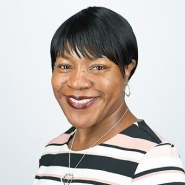By Tim Vaughan
— May 25th, 2021
On this day last year, Minneapolis police officer Derek Chauvin pressed his knee on George Floyd's neck for 9 minutes and 29 seconds, nonchalantly murdering him and simultaneously sparking global outrage and revolt against racism.
In the aftermath, business leaders the world over pledged to tackle racism and to promote Diversity, Equity, and Inclusion in the workplace. But a year on, how much has changed? We put that question to Shalini Gupta, Advita Patel, Lia Crooks, Jared Karol, Prarthna Thakore, Kameelah Benjamin-Fuller, Jennifer Thomas, Priya Bates, and Fiona Daniel.

Shalini Gupta, Leadership Communications Manager, BT
“We hear you and want every employee to know that we are committed to fighting against racism and discrimination wherever and however it exists” - said many business leaders over the last year.
Hope and optimism can take a hammering when times are hard. But the good news is that the scale is moving.
Over the last year, many leaders have spent time listening, learning, and having open discussions about racism and discrimination - and the urgency to drive change.
While some companies that found their D&I strategies to be deeply lacking are committing to action plans, the language used by many leaders is becoming more deliberate - many are calling out D&I as business-critical to the needs of a future-focussed business.
But looking forward, leaders need to accelerate progress. As the economic realities of the post-pandemic world are sinking in, leaders are heavily focussed on business recovery. With that comes the risk that the spotlight on equality discussions may dim.
To overcome this risk, leaders must:
- Communicate realistic, specific, measurable targets and their commitment
- Share progress and be accountable
- Act beyond the internal boundaries – diversity is not just about employees but partners and suppliers
- Lead for an inclusive culture that’s not just a narrative about change in policies
- Stay visible and keep the authentic conversations going - avoid the risk of being labeled as ‘brand activists’
Actions speak louder than words and for leaders to get this right today is the first test of many in our journey towards lasting change for the future.
Leaders have to BE the change they want to see in their organizations and beyond.

Advita Patel, Director, CommsRebel
Deep-rooted institutional and systemic discrimination doesn't disappear by changing a few policies or adding a couple of paragraphs to your organizational DEI strategy. If it did, then we wouldn't have to keep having the same conversation year on year.
In the last year, I have seen some progress across a few organizations, with some taking real action in addressing their diversity challenges by making a good investment in training, resources, and budget.
They've taken time to truly understand some of the issues facing individuals and how they can address the bias within their organization.
But, on the other side, since the UK Government published their race report earlier this year, I've sadly heard that some leaders don't think there's a problem and have pulled away from investing further resources into DEI.
For those who claim they don't have a diversity problem, I always ask about their top leaders and their ethnicity. If there's limited diversity in this group, then you have a problem. And if that organization published a statement during the BLM protests or posted a black square on Instagram, then I'd question their motives.
Performative allyship is something many organizations fall into as it's a quick win. But behavioral change and building a genuinely inclusive culture takes resource, appetite, and time - it's continuous learning which never has an end date.
Leaders avoid real action because it can be exhausting, and it can feel like crossing a minefield at times. But if those with privilege don't use their voices to create change and don't step into uncomfortable conversations, we will never make a difference - not in this century anyway.

Lia Crooks, Internal Communications Manager, Simply Business.
My biggest fear at the outset was that leaders would move on with the news cycle and I had low expectations that much would change. But a year on I’ve seen a real commitment to listen, to learn and to create strategy that will impact on the experiences of black employees within my workplace.
As both a leader of an ERG and an Internal Comms Manager, I’ve been able to positively influence the agenda while supporting leaders to find their voice in conversations about race.
I’ve been part of talks about everything from the impact of microaggressions, intersectionality, and the importance of representation with people from across the business and I’ve seen colleagues want to learn and do better by attending virtual sessions or using our dedicated Slack channels.
Creating cultures where it feels safe to talk about your differences or challenge bias is a really important first step but real progress will need to address the systemic barriers that impact black experiences in the workplace and that simply won’t change overnight but since last year it feels like we’re finally moving in the right direction.

Jared Karol, Confronting racism author: jaredkarol.com
Has there been any significant change in organizations since George Floyd was murdered? Not really.
Yes, there have been new DEI committees and councils and business groups formed. Yes, senior leaders have participated in listening sessions.
Yes, there have been well-crafted public statements and updated stock images, and generous corporate matching donations to Black causes.
But, has any of this moved the needle, driven much impact, or affected much change? Not really.
Corporations have been too slow and too cautious. And leaders have not been humble or open enough to be coached, to change their habits, to evolve their consciousness, to elevate their fluency, to sit with discomfort, to stay in difficult conversations, to center empathy and compassion.
The biggest barrier to progress is that these organizations and these mostly White leaders view the work as charity work, where what we really need is liberation work.
White-led organizations, and White individuals, are largely unwilling or unable to genuinely engage with Black humanity.
This is social justice work, which requires vulnerability and courage and commitment––the attributes that most organizations and leaders are not vulnerable enough, courageous enough, or committed enough to embody.

Prarthna Thakore, Engagement Lead at STRAAD
While some leaders have taken steps to look inwards and actively make changes following the global protests and conversations about systemic racism since this day last year, much of it has been performative.
If you doubt me, just look at this stark statistic: the latest Roundel report revealed that D&I didn’t feature in the top three priorities for businesses in 2021. That leads me to truly question the motives behind the wall of black squares we witnessed on #BlackOutTuesday.
It’s not enough for leaders to remind their employees that their business doesn’t tolerate racism – leaders must lean into and lead the change. They need to facilitate open dialogue, play an active role in D&I groups, and most importantly, listen and act.
Leaders also need to look at the top. Ask yourself if the people leading your business reflect those who work for it, and equally important, the communities that you serve.
It’s also imperative to go beyond race to create a truly diverse workplace, including ability, age, gender, and LGBTQIA2S+.
And lastly, as important as a diverse workplace is, an inclusive workplace is equally crucial. An inclusive workplace ensures people across the full spectrum of diversity feel welcomed, and truly creates a culture and environment of belonging.

Kameelah Benjamin-Fuller, Chief Diversity Officer & CSR Leader @ PTC
For companies that considered change in the face of indisputable social tragedy and racial trauma:
It’s been a year. We still need you. We’ve needed you all along. We need you for the full exercise that is diversity, equity, and inclusion (DEI).
Inequity (highlighting racism for this conversation) is in our bloodstream. It’s the shapeshifting, socially constructed beast that lives in every aspect of identity and social being – socioeconomic status, general safety, education, food security, mental health, earning potential, personal relationships, art, politics, etc…
We, as humans, will always look for ways to make sense of our environment and often this means understanding ourselves in relation to/through others. Add a bit of self-preservation, insecurity, real or perceived limited opportunity and…you got it…stratification is here to stay.
Should we accept this as true, how do we endeavor to create change?
1. Invest. Passion is powerful but it’s not a substitute for a solid plan. It's ok to start with a committee or task force but you need a dedicated team focused on this work, daily.
2 . As long as you have more than one person in the mix…you will have to reckon with the challenges of human relations, and you might just benefit from the powerful outcomes that diversity (done well) can offer.
This is more than ERGs and unconscious bias training. Get under the hood and start looking at the unwritten rules that drive your organization, how decisions are made, and where ideas come from – the ones that are valued, that is. Oh, hello psychological safety.
3. Get down with accountability. Push for clear outcomes, measures, and get comfortable with feedback.
As a professional in the DEI space for 20+ year, I am listening more deeply than I ever have before. I’m focused on action and holding myself and my company accountable.
I am walking the walk with you. Don’t let that fatigue set in.

Jennifer Thomas, Communications and D&I Specialist
I am encouraged by the conversations I’ve had with friends, peers and leaders within the workplace about combating racism, discrimination and the lack of representation.
Whether it’s the webinar I had the pleasure of hosting to emphasis the conversation around increasing inclusion at the World Trade Organisation (WTO). And then to see that Ngozi Okonjo-Iweala became their first woman and African to be at the helm followed by half of her chosen deputies also being female – another first for the organisation.
Or to see GlaxoSmithKline (GSK) setting race and ethnicity aspirational targets for senior roles in the UK and US – a positive progression from gender targets.
There’s an invigorating allyship taking place in several companies and it’s encouraging to see tangible actions, initiatives and effort happening that genuinely was not present before. People and organisations leaning in with their eyes open, wanting to make impactful changes.
But, while I believe there are new opportunities for change, it would be remiss of me not to share my disappointment and frustration that I still have to navigate various racial challenges.
We all need to continue to break down the biases and judgments that still exist and eradicate the cycle. So, I urge everyone to use their voice and influence wherever they can to challenge and put actions in place to be the change that we still very much need.

Priya Bates, President, Inner Strength Communications
It's a case of progress, not perfect. While there has been a rush to be relevant and manage reputations to be perceived on the right side of history, the reality is a little more jarring.
Too many speak to trends through black boxes, hashtags, and posts, with limited input from the diverse people they claim to stand up for.
Yes, there are organizations who have looked deeply at themselves and asking, “Who are we and what do we stand for?” They’ve looked at employee lifecycles from recruitment to orientation, training, performance management, talent development, and exit to create goals, metrics, and accountabilities to drive real change that is operational.
They are looking at the suppliers they hire, board members they appoint, and the organizations they partner with. Most of these organizations have also acknowledged that change will take time but they’ve set targets against which they will measure themselves.
But there are others who are simply content in their performative bubbles talking about the lack of talent, surrounding themselves with people just like them, talking about meritocracy, and cancel culture feeling forced to change yet left out of the diversity conversation because, at the end of the day, it’s all about them.
Let’s also acknowledge that change is uncomfortable. It’s time to reset that discomfort and realize the opportunities that exist when we use it to make progress on change that we know is simply the right thing to do. Let’s keep up the progress.
There will be mistakes along the way but I’d rather we move forward than give up because perfect seems so far away.
The truth is things are changing and with empowered voices, for the first time, I don’t think we can go back to the way things have always been. As American poet Amanda Gorman shared, “Just is isn’t necessarily Justice.”

Fiona Daniel, CEO & Founder FD2i Inclusion Business Partners
One Year On…Are We Guilty too?
There is no denying the visibility of the black lived experience in the UK has never been higher. There have been so many programs across major channels leading the way in telling the black stories from many different perspectives.
Stories that sadly all lead to the fact that black people have and continue to be impacted by both explicit and implicit racism.
The pledges and commitments will take time to come through, but UK Plc is guilty of not doing enough, and nothing at all according to Accenture research in November 2020. Prior to the murder of George Floyd, the stats for UK plc from a black perspective was dismal, it has taken too long to act and address the status quo, an outcome that will be felt for some time to come.
Black employees and professionals, myself included, are still the drivers of their own destiny, doing all they can to change the narrative, drive change, and speak truth to power all with the aim of convincing and influencing leaders who look nothing like them to have the conversation, lead, and take action, and to help them get comfortable with black people.
These phrases are still too common “I don’t know what to say, I don’t want to say the wrong thing, it’s too uncomfortable” “it’s political” “I don’t want to get canceled”. The reality is that policy makers, people decision-makers, leaders, colleagues, systems, and processes have been guilty of canceling black people for some time.
Have we made progress one year on?
Yes, in terms of raising the visibility of race, but overall no. We still have time to make a difference in our institutions, in society, and in government, we must understand race and racism in all its forms and understand history inclusive of black people because it matters, we matter.
We must act, step up in being anti-racism and make this moment matter.
